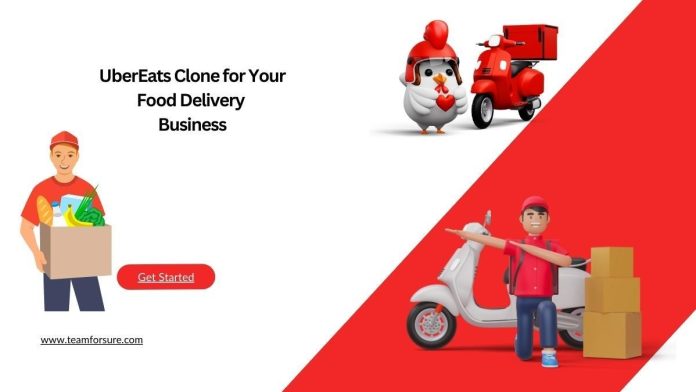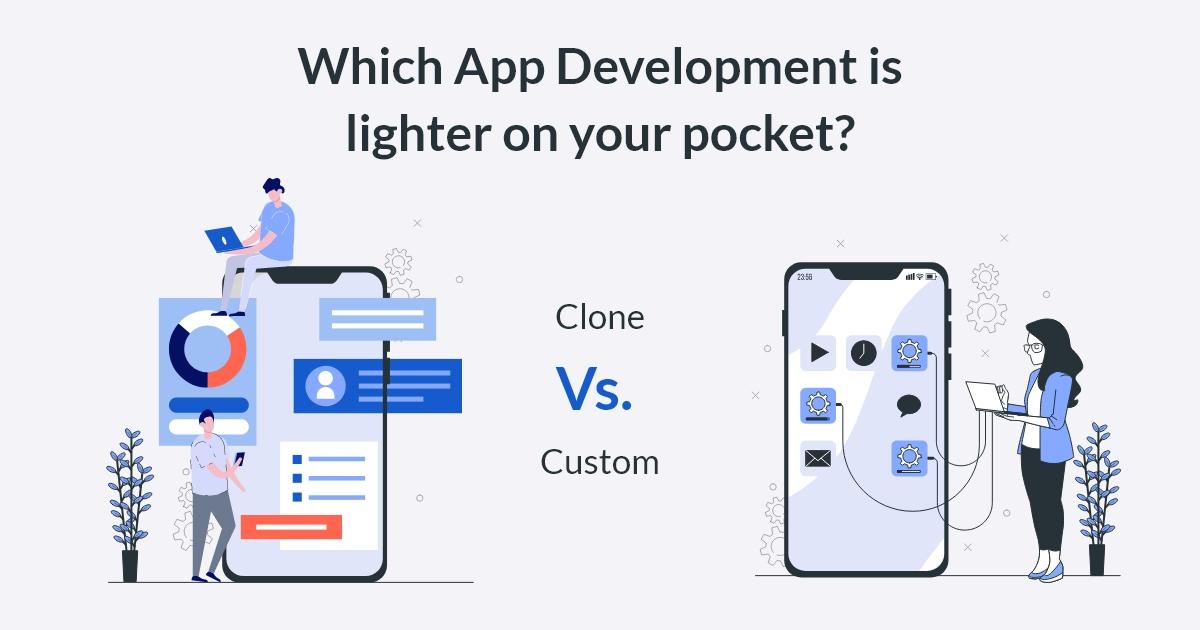Welcome to the Consistent Blog, your go-to resource for valuable insights and expert guidance on building a highly profitable UberEats clone. If you’re looking to venture into the booming food delivery market and create an app that replicates the success of UberEats, you’ve come to the right place.
Building a successful UberEats clone requires a well-planned strategy that takes into account various aspects, including market research, feature prioritization, intuitive design, robust development, and targeted marketing campaigns. With our comprehensive and actionable articles, you’ll gain the knowledge and insights needed to navigate each stage of the development process with confidence.
Let’s get started and transform your vision into a successful and revenue-generating UberEats clone app!

Understanding the UberEats Model
In today’s fast-paced world, convenience is a top priority for consumers, and UberEats has revolutionized the way people order food. To successfully build an UberEats clone, it is essential to understand the underlying model that has made UberEats a dominant player in the food delivery industry.
UberEats, an extension of the renowned ride-sharing platform Uber, is an on-demand food delivery service that connects hungry customers with local restaurants. By leveraging the power of mobile technology, UberEats provides a seamless and efficient way for users to order their favorite meals from a wide range of eateries.
UberEats also excels in providing a reliable and efficient delivery service. Once an order is placed, it is seamlessly transmitted to the restaurant, where it is prepared. An UberEats driver, known as a delivery partner, picks up the order and ensures timely delivery to the customer’s doorstep. The real-time tracking feature enables customers to monitor the progress of their order, adding an extra layer of convenience and transparency.
In the next section, we will delve into the planning phase of building your UberEats clone, where we will discuss setting objectives, conducting market research, and identifying unique selling points. Stay tuned to learn how to lay the foundation for a successful clone app that converts readers into leads.

Planning Your UberEats Clone
Building a successful UberEats clone requires careful planning and strategic decision-making. In this section, we will explore the crucial steps involved in the planning phase to ensure that your clone app is well-positioned to convert readers into leads and drive revenue.
- Define your business objectives and goals:
Before embarking on the development process, it’s essential to define your business objectives and goals. What do you aim to achieve with your UberEats clone? Are you targeting a specific geographic location or a niche market segment? By clearly outlining your objectives, you can align your strategies and resources accordingly.
- Conduct market research:
Thorough market research is vital to identify opportunities and understand the competitive landscape. Analyze the existing food delivery market in your target area, assess customer preferences, and study the strengths and weaknesses of your competitors. This research will help you identify unique selling points and differentiate your clone app from the competition.
- Identify core features and functionalities:
To create a compelling UberEats clone, it’s crucial to identify the core features and functionalities your app should offer. These may include user registration and profiles, restaurant listings with menus and reviews, real-time order tracking, secure payment options, and customer support. Prioritize features based on user expectations and market demands.
- Analyze monetization strategies and revenue models:
Consider different monetization strategies to generate revenue from your UberEats clone. Common approaches include charging restaurants a commission fee on each order, implementing delivery fees, or offering premium subscription plans for enhanced features. Assess the viability of each model based on your target market and competition.
- Choose the development approach:
Decide whether to opt for custom development or utilize a ready-made solution for your UberEats clone. Custom development offers more flexibility but requires higher investment and longer development time. Ready-made solutions provide a quicker launch but may have limitations in customization. Evaluate your resources and timeline to make an informed decision.
- Ensure scalability and performance optimization:
As your clone app gains popularity and attracts more users, scalability and performance optimization become crucial. Choose a robust technology stack that can handle high traffic and accommodate future growth. Regularly monitor and optimize your app’s performance to ensure smooth and seamless user experiences.
By meticulously planning each aspect of your UberEats clone, you lay a solid foundation for success. Remember to continuously refine your strategies based on market dynamics and user feedback. In the next section, we will delve into design and user experience, exploring how to create an intuitive and engaging interface that keeps users hooked. Stay tuned for valuable insights on designing a captivating UberEats clone.
Design and User Experience
When developing an UberEats clone, designing an intuitive and captivating user experience is essential to attract and retain users. In this section, we will delve into the key considerations for creating an appealing design and seamless user experience that converts readers into leads.
- Intuitive and user-friendly design:
The design of your UberEats clone should be intuitive, making it easy for users to navigate and interact with the app. Use a clean and uncluttered layout with clear labels and easily recognizable icons. Ensure that the most important features, such as search, menu browsing, and order placement, are prominently displayed for effortless access.
- Visual appeal and branding:
Visual elements play a crucial role in capturing users’ attention and creating a memorable brand image. Choose an appealing color scheme that aligns with your brand identity and evokes positive emotions. Incorporate high-quality images of food, enticing users with mouth-watering visuals. Consistent branding throughout the app helps establish trust and recognition.
- Seamless order placement process:
Streamline the order placement process to make it as frictionless as possible. Implement a step-by-step flow with clear instructions, allowing users to add items to their cart, customize orders, and select preferred delivery options. Provide real-time updates on order status and estimated delivery time to keep users informed and engaged.
- Real-time order tracking:
One of the most valued features of UberEats is real-time order tracking. Incorporate a map-based tracking system that allows users to monitor the progress of their delivery in real-time. Provide updates on the driver’s location, estimated arrival time, and any potential delays. This transparency enhances user trust and satisfaction.
- Integration of customer reviews and ratings:
User-generated reviews and ratings contribute to building trust and influencing purchase decisions. Display customer reviews and ratings for each restaurant to help users make informed choices. Allow users to leave feedback and ratings for their orders, fostering a sense of community and encouraging engagement.
- Personalization and recommendations:
Personalization enhances the user experience by tailoring recommendations based on user preferences and past orders. Implement a recommendation engine that suggests relevant restaurants and dishes based on user history and preferences. This personal touch helps users discover new options and increases their engagement with the app.
- Responsive design and cross-platform compatibility:
Ensure that your UberEats clone is optimized for various devices and screen sizes. Implement responsive design principles to adapt the app’s layout and functionality seamlessly across smartphones, tablets, and desktops. Compatibility with both iOS and Android platforms is crucial to reach a wider audience.
By prioritizing an intuitive design and seamless user experience, your UberEats clone can engage users and convert them into leads. In the next section, we will discuss the development and technology stack required to bring your clone app to life. Stay tuned for insights on building a robust and scalable UberEats clone app.
Development and Technology Stack for UberEats Clone
In the development phase of building your UberEats clone, choosing the right technology stack is crucial to ensure a robust and scalable app.
In this section, we will discuss the essential considerations for development and the technology stack required to bring your UberEats clone to life.
- Development approach:
Decide whether you will opt for custom development or utilize a ready-made solution. Custom development provides more flexibility and control over the app’s features and functionality. It requires a skilled development team and a longer development timeline. On the other hand, ready-made solutions offer quicker deployment but may have limitations in customization. Assess your resources, budget, and specific requirements to make an informed decision.
- Backend development:
For the backend development of your UberEats clone, consider using technologies such as Node.js or Ruby on Rails. These frameworks offer scalability, performance, and ease of development. They provide robust APIs for integrating with external services, such as payment gateways, restaurant management systems, and order tracking systems.
- Database management:
Choose a database management system that can handle large amounts of data and ensure efficient retrieval and storage. Popular choices include MySQL, PostgreSQL, or MongoDB. The selection depends on factors like data structure, scalability, and performance requirements.
- APIs and integrations:
Integrate your UberEats clone with various APIs to enhance its functionality. These include payment gateway APIs for secure transactions, geolocation APIs for accurate tracking and delivery, SMS APIs for order notifications, and restaurant management system APIs for seamless order processing. Ensure proper integration and testing to maintain a smooth user experience.
- Mobile app development:
For developing the mobile apps (iOS and Android) of your UberEats clone, consider using cross-platform frameworks like React Native or Flutter. These frameworks allow you to build a single codebase that works on both platforms, saving development time and effort. They also provide native-like performance and access to device features.
- Real-time order tracking:
Implement a real-time order tracking system using technologies like WebSockets or server-sent events (SSE). These technologies enable seamless communication between the user, driver, and restaurant, providing accurate and up-to-date order tracking information.
- Cloud infrastructure and hosting:
Consider using cloud platforms like Amazon Web Services (AWS) or Google Cloud Platform (GCP) for hosting and scaling your UberEats clone. These platforms offer reliable infrastructure, scalability, and easy deployment options. Utilize features like load balancing and auto-scaling to handle increasing user traffic efficiently.
- Testing and quality assurance:
Ensure comprehensive testing of your UberEats clone to identify and resolve any bugs or usability issues. Perform unit testing, integration testing, and end-to-end testing to guarantee a smooth user experience. Implement automated testing frameworks and continuous integration/delivery (CI/CD) pipelines for efficient testing and deployment processes.
By choosing the right development approach and technology stack, you can build a robust and scalable UberEats clone. In the next section, we will discuss the crucial aspects of marketing and customer acquisition to drive user engagement and conversion. Stay tuned for insights on promoting your UberEats clone effectively.
Marketing and Customer Acquisition
Marketing plays a vital role in driving user engagement and customer acquisition for your UberEats clone. In this section, we will explore key strategies and tactics to effectively promote your clone app and attract a substantial user base.
- Establish a strong online presence:
Create a compelling website and social media profiles for your UberEats clone. Optimize your website with relevant keywords and ensure it provides clear information about your app’s features and benefits. Engage with your audience on social media platforms and share valuable content related to food, delivery tips, and promotions.
- Search Engine Optimization (SEO):
Optimize your website and content for search engines to improve your app’s visibility in organic search results. Conduct keyword research to identify popular search terms related to food delivery and include them strategically in your website’s content. Create high-quality, informative blog posts and articles that address user queries and establish your app as an authority in the industry.
- Content marketing:
Develop a content marketing strategy to attract and engage potential users. Create informative and engaging content such as blog posts, videos, infographics, and recipes related to food delivery and the benefits of using your UberEats clone. Promote this content through your website, social media channels, and guest posting on relevant industry blogs.
- Targeted advertising campaigns:
Utilize targeted advertising campaigns to reach your ideal audience. Platforms like Google Ads and social media advertising allow you to segment your ads based on location, demographics, and user interests. Craft compelling ad copies with clear calls-to-action (CTAs) that encourage users to download and use your UberEats clone.
- Partnerships with local restaurants:
Forge partnerships with local restaurants and eateries to expand your app’s reach and offer a wide variety of cuisine options. Collaborate with popular or unique establishments to create exclusive deals, promotions, and discounts for users of your UberEats clone. Leverage their customer base to attract new users and foster loyalty.
By implementing a comprehensive marketing strategy, you can effectively promote your UberEats clone, attract a growing user base, and convert them into loyal customers. In the next section, we will discuss strategies for converting readers into leads by optimizing landing pages, calls-to-action, and lead capture forms. Stay tuned for valuable insights on maximizing lead conversion for your clone app.
Wrapping Up
Building a successful UberEats clone requires a well-planned strategy that encompasses understanding the UberEats model, thorough planning, intuitive design, robust development, and effective marketing. By following the key points discussed throughout this article, you can set yourself on the path to creating a highly profitable clone app.
The development phase requires careful consideration of the technology stack, backend development, mobile app development, and testing. Scalability and performance optimization are essential for handling increasing user traffic.
In conclusion, developing an UberEats clone with a well-planned strategy has the potential to be highly profitable. By implementing the insights discussed in this article, you can create an app that not only replicates the success of UberEats but also captures the attention of your target audience. It’s time to take action and embark on your journey to develop a thriving UberEats clone app.
————————————————————————————————————————
Author Profile:
Name: Kapil Dev
Author Picture :
Bio: Kapil Dev is a seasoned tech writer specializing in various aspects of app development. With a wealth of experience in the field, Kapil has a deep understanding of the intricacies involved in creating successful apps. His expertise lies in clone app development, where he has helped numerous businesses bring their ideas to life. Kapil’s in-depth knowledge of app development frameworks, user interface design, and backend integration allows him to provide valuable insights and practical advice to developers and entrepreneurs. When he’s not writing, Kapil enjoys staying up-to-date with the latest technological advancements, playing cricket, and exploring new destinations. Feel free to reach out to Kapil for any inquiries or assistance in the world of app development.



















